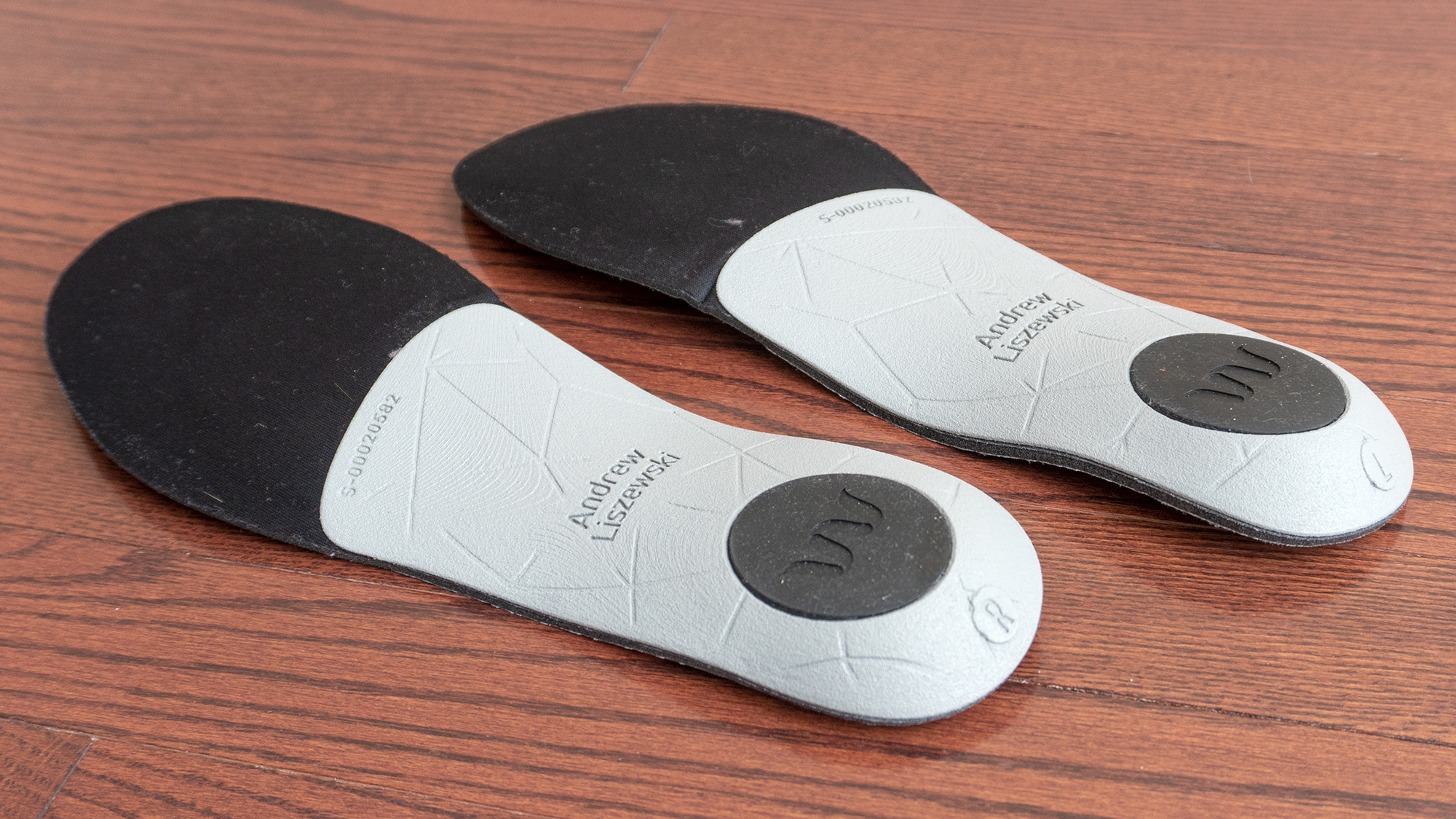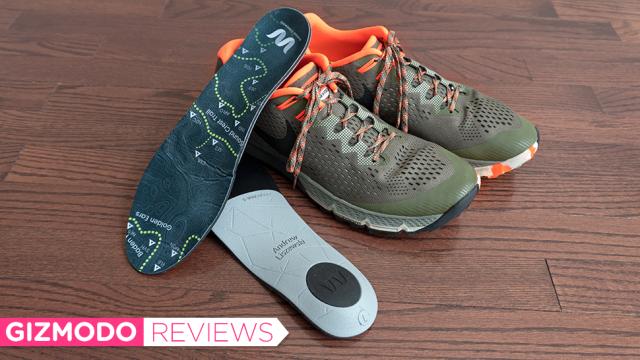If a large part of your day is spent on your feet, a good pair of shoes can only do so much to keep you comfortable. Every foot requires different levels of support and cushioning, and ideally, we’d all visit a pedorthist for a custom set of shoe inserts, were it not so expensive. Dr. Scholl’s has a cheaper $140 solution that uses your smartphone to help create 3D-printed insoles that are customised for every foot.

Dr. Scholl's Custom 3D-Printed Inserts
WHAT IS IT?
Custom orthotics created by a smartphone app and 3D printers.
PRICE
$140
LIKE
Cheaper and easier than going to a pedorthist.
DISLIKE
Getting proper photos of your foot through the app can be tricky.
I inherited my father’s flat arches which can result in quite a bit of soreness at the end of a long day. But after covering the recent New York Toy Fair with a pair of Dr. Scholl’s custom inserts underfoot, I’m sold on the idea of splurging a bit to treat my feet.
The Dr. Scholl’s app requires users to snap four strategically-angled photos of their feet for the service to work. The company has teamed up with a Canadian startup called Wiivv, which developed the technology that’s used to analyse these photos; mapping out a foot’s unique shape and contours to create a 3D model, and an insert to match it. (This is why the photos of my inserts have the Wiivv logo on the heel, as Dr. Scholl’s doesn’t currently ship its versions internationally.)
Standing on a sheet of white printer paper when snapping photos of your feet from above serves as a size and shape reference, and I admit I was impressed that the insert I was sent fit perfectly in my shoes without any trimming. But the app requires the piece of paper be placed on the ground and right up against the edge of a wall for accuracy. Ninety-nine per cent of the walls in my house have a decorative baseboard trim, which resulted in my photos being repeatedly rejected after submission. I eventually found a wall/floor combo that worked, but the process can be a little finicky.
Snapping photos of the inside of your feet, which is used to measure your arch and other contours, is much easier as the only requirement is ensuring your foot lines up with an on-screen overlay for each shot. I understand why the photography requirements are so specific, and it’s admittedly far more convenient than a trip to a clinic, but a couple of other Gizmodo staffers also had challenges getting their foot photos just right, so there’s room for improvement.
After the photos I took in the app were finally approved, it took about a week for my custom inserts to arrive in the mail. Whereas cheap, generic inserts are really only designed to absorb and dissipate some of the impact on your feet every time you take a step, inserts like these are designed to support and raise the arch which in turn helps align the foot and guide it through more natural motions with every step.
The 3D-printed nylon plastic used for these inserts is quite rigid which was very noticeable the first time I put them in my shoes and walked around, but it only took about ten minutes for me to forget they were even there.
All feet are different, so I had my colleagues Victoria Song, Emily Lipstein, and Beth Elderkin try them out. Here’s a sampling of their impressions:
-
“They took a day or two to get used to, but once I did, they were a lifesaver. I have flat feet, and it was just a huge improvement in the length of time I could walk or stand around.”
-
“I haven’t been as active since it’s the dead of winter, and it’s not exactly the weather for spending hours outside at a time, but my usual 5km/day have been helped out by wearing these orthotics.”
-
“The only thing I don’t like is that they slide around in my shoes a bit (I have the full-length ones) and would probably like some traction on the bottoms rather than the smooth, somewhat slippery plastic.”
-
“I don’t think they’re worth $100 [$AU141]. I fully believe in getting good insoles for your feet, especially as someone with a high arch. But you can get something just as good for about $US60 ($85) with a brand like Superfeet, which has a large variety of insole types for different needs.”
That last comment was mirrored by a pedorthist I spoke to. The use of nylon plastic provides adequate support and stiffness, and not so much that it could force someone’s foot into an uncomfortable position they’re not used to. That’s good, but without additional material beneath the arch, even nylon will eventually start to sag with heavy use, reducing the amount of support it can provide.
They’re no substitute for a top-of-the-line, $700+ pair of hand-made custom orthotic inserts, but at $140, they’re a huge improvement over a cheap $20 pair made of just foam. That said, the pedorthist I spoke to also pointed out that companies like Superfeet and SOLE sell cheaper inserts with varying levels of arch support optimised for every size of shoe.
A hundred and forty bucks isn’t cheap, especially when you can get a brand new pair of shoes for less than that. If Dr. Scholl’s and Wiivv find a way to get the price down so they’re more competitive with other high-end inserts already on the market, I think they’d be hard to beat. But for the time being, I think you can still treat your feet for a lot less money.
README
-
A definite step-up from the cheap, foam drug store inserts you’ve been using, but they won’t correct any physical problems that are causing foot pain like a custom orthotic can.
-
The photos of your feet needed to create your custom inserts have to be snapped from very specific angles, and while the app does a good job at walking you through the process, you may have to repeat it several times before your images are approved.
-
Your inserts can be personalised with a small selection of fabric patterns and your choice of plastic colour for the 3D-printed support.
-
They work as promised, and if you have smaller arches, or flat feet, you’ll feel a marked improvement in foot comfort at the end of a long day.
-
From our testing you can get similar results from inserts that cost half as much if you’re willing to find the right pair, or do some of the customisation yourself.
